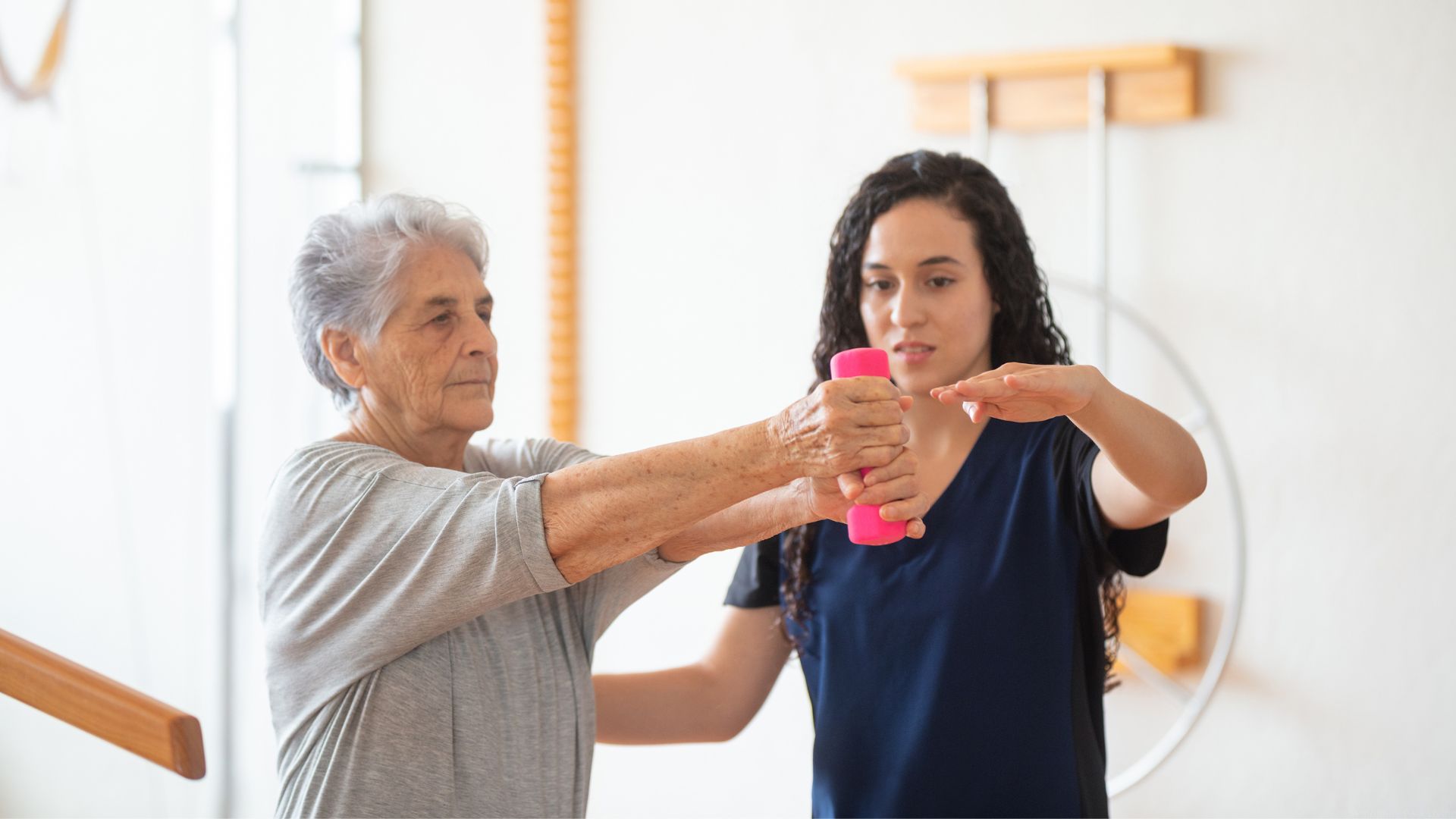The Benefits of Physical Therapy for Older Adults

As we age, it’s only natural to experience changes in strength, flexibility, and mobility. Everyday tasks that once felt effortless—walking to the mailbox, climbing stairs, or bending down to tie a shoe—can become more challenging. But aging doesn’t have to mean giving up your independence or living in discomfort. Physical therapy offers older adults a way to stay active, manage pain, and recover more quickly from injuries or surgeries.
Whether you’re managing chronic conditions, recovering from a fall, or simply looking to maintain your quality of life, physical therapy can play a powerful role in healthy aging. In this guide, we’ll explore the top benefits of physical therapy for older adults—and how to get started.
What is Physical Therapy and How Does it Work?
Physical therapy (PT) is a healthcare discipline that focuses on helping people improve their movement, strength, and function. For seniors, this often means addressing issues like joint stiffness, balance problems, weakness, and pain through guided exercise, manual therapy, and education.
Unlike general exercise programs, physical therapy is personalized to your specific health goals and limitations. It’s overseen by licensed professionals—physical therapists—who assess your condition and develop a treatment plan based on your needs. Whether you’re dealing with arthritis, a recent surgery, or age-related muscle loss, PT can help you move more confidently and safely.
Improved Mobility and Flexibility
Mobility and flexibility are two areas that often decline with age, making everyday tasks more difficult. Stiff joints and tight muscles can limit your ability to reach, bend, or walk without discomfort. Physical therapy focuses on improving these areas through stretching, range-of-motion exercises, and functional movement training.
Therapists guide you through gentle, progressive movements that help lubricate your joints and lengthen muscles. Over time, you may find it easier to get out of bed, put on shoes, or move around the house. Improved mobility also opens the door to more physical activity, which plays a key role in aging well.
Increased Strength and Endurance
Muscle mass naturally declines with age—a process known as sarcopenia—but that doesn’t mean you can’t rebuild strength. In fact, strength training is one of the most effective tools older adults can use to maintain independence. Physical therapy includes carefully designed strength exercises that are appropriate for your fitness level, using resistance bands, weights, or even your own body weight.
By working with a therapist, you’ll target key muscle groups needed for daily living, like your legs (for standing and walking), arms (for lifting and carrying), and core (for balance and posture). Building endurance can also reduce fatigue, so you’ll have more energy for the things you love.
Fall Prevention and Better Balance
Falls are the leading cause of injury among older adults. According to the CDC, one in four Americans over the age of 65 falls each year. Physical therapy addresses many of the risk factors that contribute to falls—such as weak muscles, poor posture, limited joint mobility, and balance issues.
Your therapist may conduct a balance assessment and introduce exercises like tandem walking, single-leg stands, and stability drills. They can also teach you how to use assistive devices correctly and recommend changes to your home environment to reduce fall risk.
Improved balance not only prevents injuries—it can also help reduce the fear of falling, which is a major barrier to activity for many seniors.
Pain Reduction Without Heavy Medication
Chronic pain is common in older adults, particularly from conditions like osteoarthritis, spinal stenosis, and degenerative disc disease. While medications can help, they often come with side effects—especially when used long-term. Physical therapy offers a drug-free alternative for pain management by treating the root causes of discomfort.
Therapists use a combination of movement, manual techniques, and modalities such as heat, cold, electrical stimulation, or ultrasound. These methods can improve circulation, reduce inflammation, and release tension in muscles. Many patients report a significant reduction in pain levels after just a few sessions.
By improving how your body moves, physical therapy can help you avoid the cycle of inactivity and pain that keeps many older adults sidelined.
Recovery From Surgery or Injury
If you’ve recently had surgery—like a knee or hip replacement—or suffered an injury such as a fracture or muscle strain, physical therapy is key to a safe and successful recovery. After surgery, the body needs time to heal—but it also needs movement to prevent stiffness, scar tissue, and loss of function.
Your physical therapist will design a plan to rebuild strength, regain range of motion, and restore balance. They’ll also monitor your progress and make adjustments as you improve. Without PT, recovery can be longer, less effective, and more frustrating.
Even minor injuries like a twisted ankle or pulled muscle can benefit from therapy to avoid long-term complications or repeat injuries.
Managing Chronic Conditions
Many chronic health conditions can be managed more effectively with physical therapy. For example:
- Parkinson’s disease: PT can help with gait training, posture correction, and movement strategies to improve coordination and reduce falls.
- Stroke recovery: PT is critical for regaining movement, strength, and balance after a stroke, often retraining the brain to form new neural pathways.
- Osteoporosis: Therapists can guide safe weight-bearing exercises that help improve bone density and reduce fracture risk.
- Heart disease or diabetes: Physical activity improves cardiovascular health and blood sugar control, and therapists can create a plan that’s safe and effective.
Rather than simply adapting to limitations, physical therapy empowers seniors to work toward progress and greater control over their condition.
Enhanced Independence and Confidence
One of the most profound benefits of physical therapy is the restoration of independence. When you regain the ability to walk without fear, carry groceries, or get in and out of a car easily, it boosts more than just your physical function—it boosts your confidence and self-worth.
Physical therapy is about more than exercises. It’s a tool to help you live life on your terms—whether that means keeping up with your grandchildren, gardening in the backyard, or traveling with friends.
Increased independence also reduces the likelihood of needing in-home care or transitioning to an assisted living facility, helping many seniors age in place longer.
In-Home vs. Outpatient Physical Therapy: What to Know
Depending on your needs, you may receive physical therapy in an outpatient clinic, at home, or even in a senior living community. Each option has its benefits:
- Outpatient therapy typically offers more equipment and resources, ideal for those who can travel safely. Learn more about outpatient therapy.
- In-home therapy brings the therapist to you—helpful for seniors with mobility limitations, recent surgeries, or home safety needs. Learn more about PT at home.
- Telehealth options are increasingly available, especially for follow-up sessions or exercise check-ins.
Your doctor or care team can help determine what setting is best for your situation. In many cases, Medicare and supplemental insurance will cover physical therapy if prescribed by a physician.
What to Expect in Your First Physical Therapy Session
If you’re new to physical therapy, your first appointment will likely involve a thorough evaluation. Your therapist will assess:
- Your range of motion
- Strength and balance
- Pain levels and physical limitations
- Your goals and concerns
From there, they’ll design a treatment plan tailored to your needs. Expect to receive hands-on guidance, perform exercises, and receive education on posture, safety, and home exercises. Check out our related blog about low impact workouts for seniors.
Wear comfortable clothing, bring a list of medications, and come prepared to discuss your medical history. Most importantly, be honest about what’s bothering you—your therapist is there to help you feel better and move more freely.
Taking the First Step Toward a Stronger You
Physical therapy isn’t just for athletes or people recovering from surgery—it’s a proven, practical tool that helps older adults stay mobile, reduce pain, and live with greater independence. Whether you’re managing a chronic condition, rebuilding strength after an injury, or simply looking to stay active, physical therapy offers personalized care that meets you where you are.
Getting started is simple: talk to your doctor, ask about a referral, and find a licensed therapist experienced in working with older adults. It’s never too late to move better, feel stronger, and live the life you want.
Are you or a family member exploring senior living options? We invite you to consider Symphony Park senior apartments, a luxury independent living resort located in the heart of North Carolina.
Contact Us
More than senior living apartments—Luxury independent living awaits you at Symphony Park. Contact us today to explore resort-style retirement living in North Carolina.



